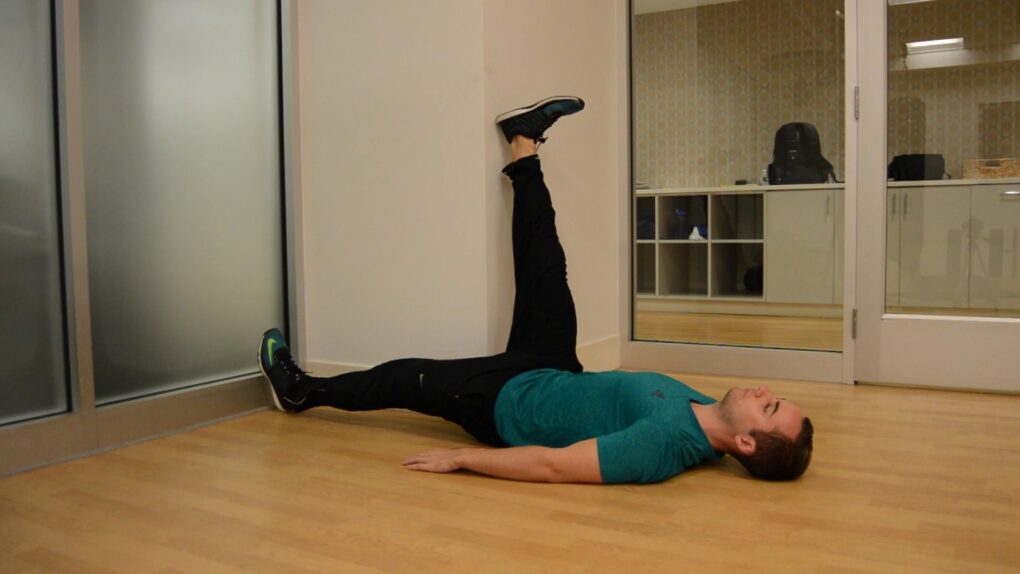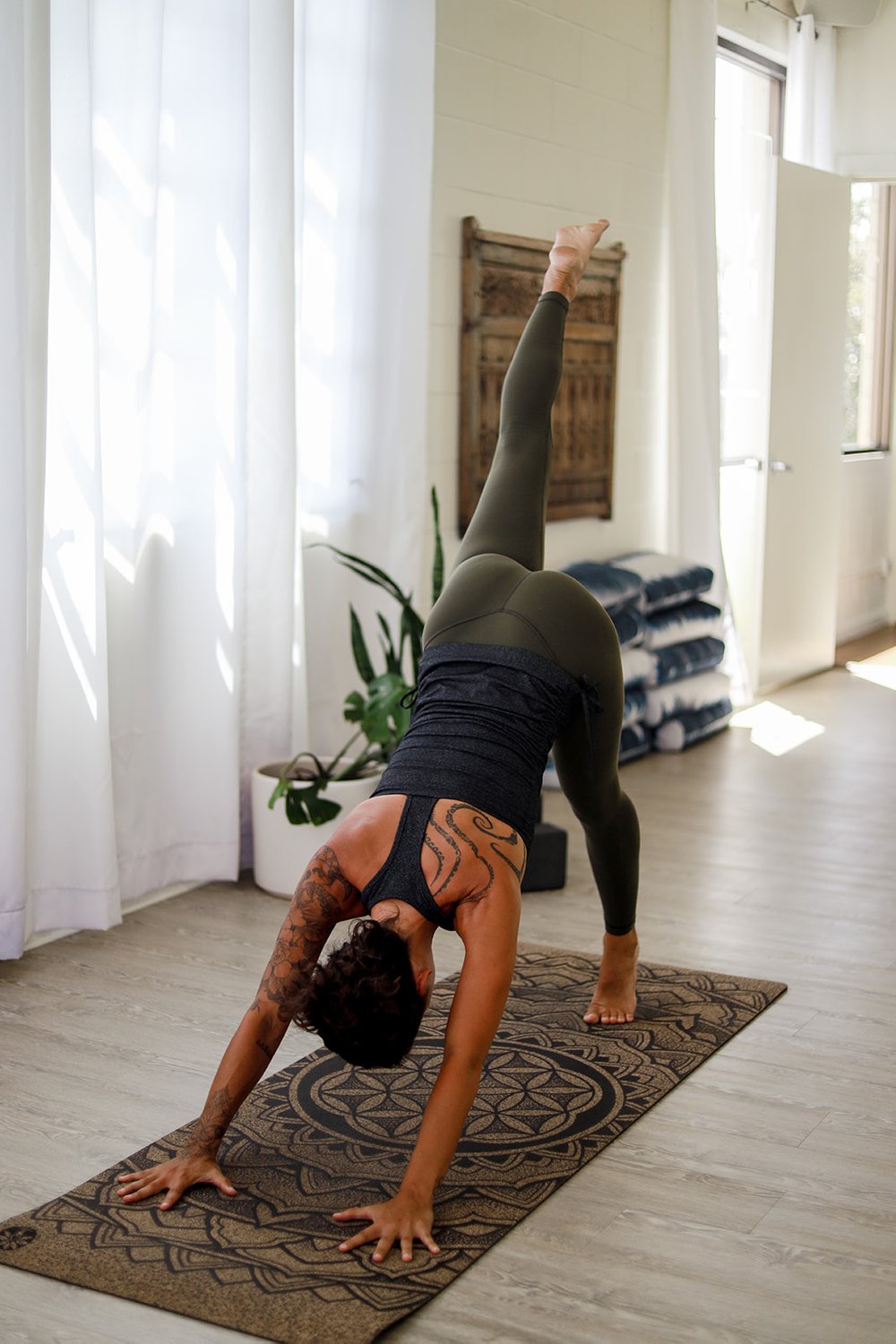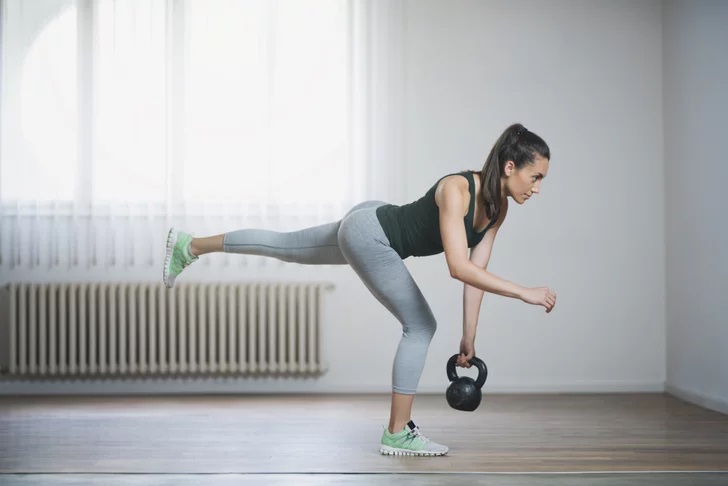Table of Contents
- Activities to Avoid or Change
- For Temporary Relief
- Stretches and Exercises for Longer-Lasting Relief
- Yoga Corner
Here, you will find self-care strategies to relieve pain behind the knee when rising from a seat or walking. Look at this other post for more information about how people describe and aggravate this pattern.
Activities To Avoid or Change:

Legs Pressed into the Edge of the Seat
This presses directly into the rigger points that elicit the referred pain to the knee. People sometimes stretch their legs out in the car, creating a mild stretch sensation. However, this continued pressure and stretch eventually leads to an aggravated hamstring. Consequently, there is knee and thigh pain.
Prolonged Immobility
Sitting for long periods with your knee bent, even when it isn’t touching the seat, can cause this pain. Additionally, sleeping with the knees folded activates this pain in the back of the knee.
For Temporary Relief:
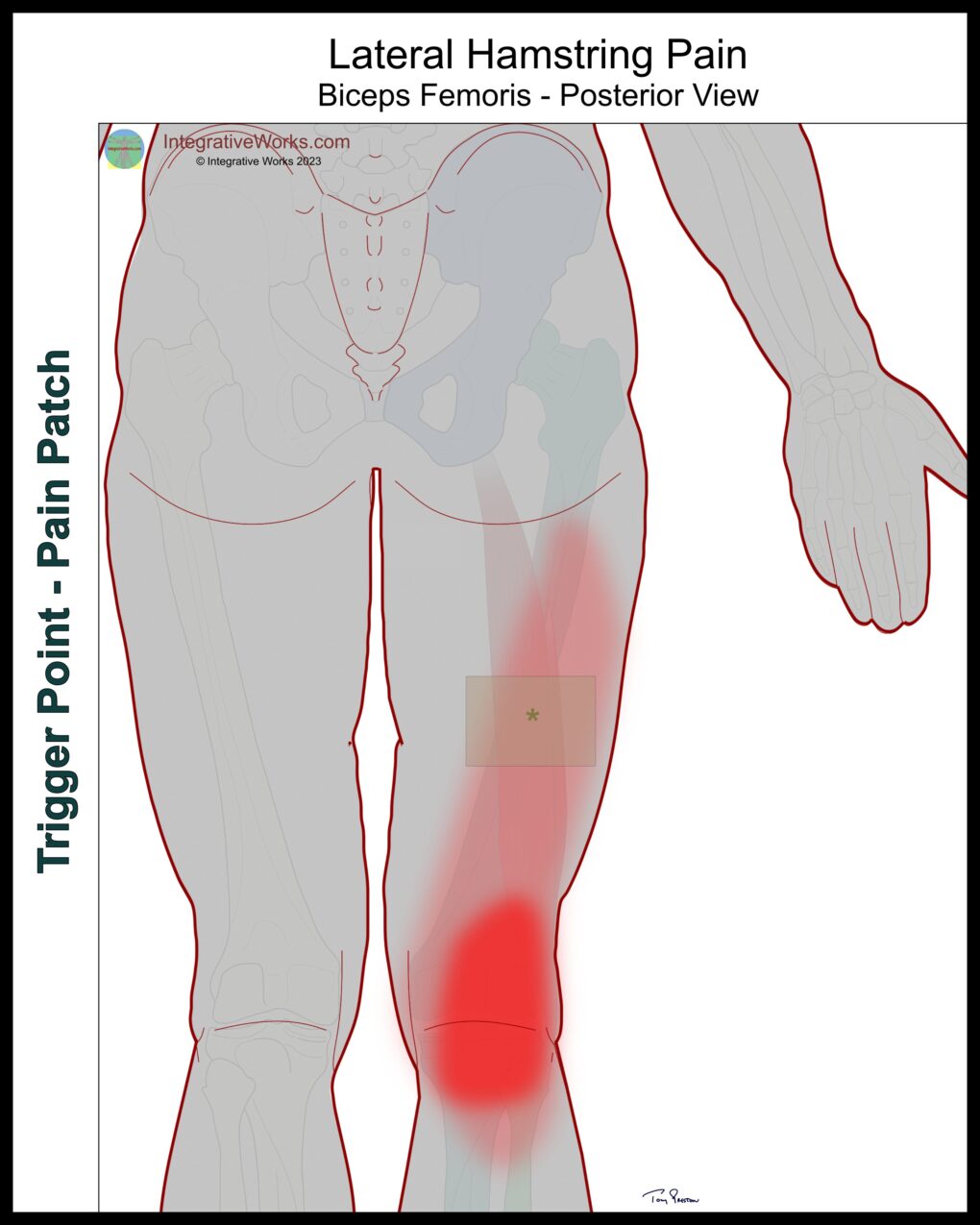
Pain Patch
It isn’t easy to stick a patch behind the knee. Furthermore, it isn’t as effective.
Place the patch over the trigger points, about mid-way on the thigh. Typically, this area is a little tighter and more sensitive. If you want to be more specific, rub a piece of ice along your thigh. Place the patch on the area that is most sensitive to the ice.
These self-care activities, like over-the-counter drugs, are not intended to replace appropriate medical attention. If you have concerns about these self-care activities, get help from a professional. Use these suggestions and strategies with discretion and at your own risk. See your doctor when your pain is severe, persistent, or not responding to these simple suggestions.
Stretches and Exercises for Longer-Lasting Relief:
Easy Stretch
Doorway stretches are simple and effective. Just prop your leg on the doorframe while the other leg extends through the doorway. having a straight leg along the frame while your hips are against the frame is the goal. So, tart with your hips away from the frame and ease toward the frame as your hamstrings lengthen.
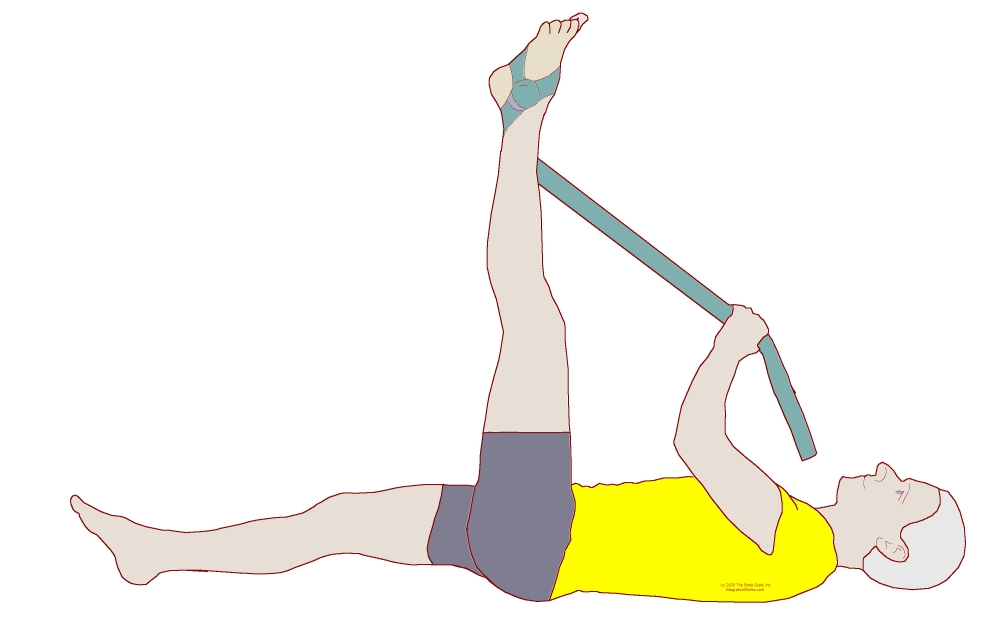
Active Stretching – Better!
Active stretching with strengthen the opposing quadriceps and retrain your movement. Naturally, Many therapists use this as their “go to” stretch.
Wrap a rope around the arch of the foot. Then wrap it along the outside of the ankle. Consequently, assisting your stretch will turn the toe out. You’ll feel it as it targets the outside hamstring behind the knee.
This other post has ten tips to improve your stretching by adopting active-isolated principles.

Single Leg Deadlift – Even Better!
Single-leg deadlifts add something to the active stretch. They help with balance and stability. This is particularly important for folks who want to avoid falls as they age. I give this to many patients and use it daily in my workouts. Most have quick increases in stability and reduced lower back pain.
First, focus on getting the back leg up instead of bending forward. Lift until you feel the stretch on the lower leg. Second, start with something to stabilize yourself until you can do this without assistance. Third, Start with 10 on each leg. Increase weekly until you can do 4 sets of 10 on each leg without holding onto something.
More Active Strengthening
Walking lunges are a compound exercise for the active body. Amazingly, they do many things to stabilize the hip. So, walking lunges lengthen and strengthen the hamstrings. Additionally, they build stabilizers in the hip and back. However, they can be too difficult for some and have too much impact for others. Over the years, they have been effective and useful for the active body.
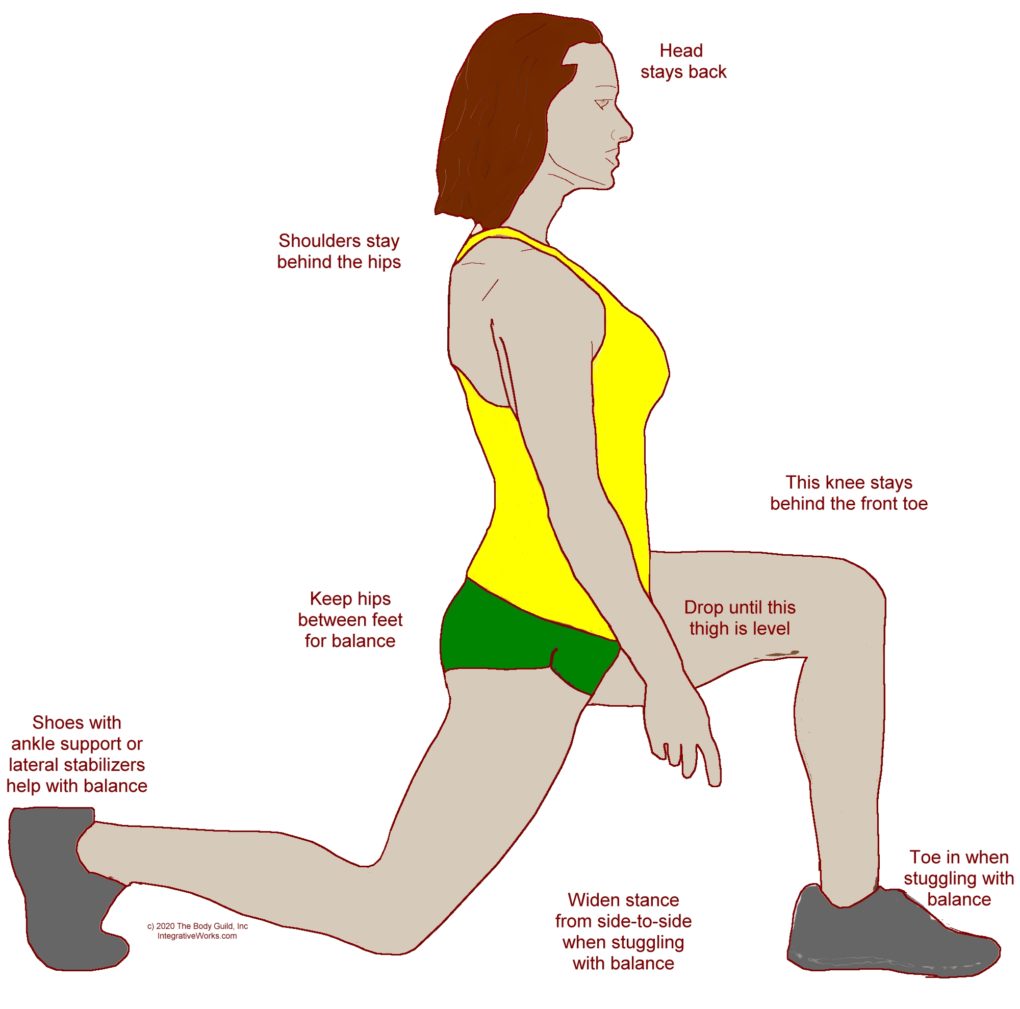
Walking Lunges
- Step forward so the front foot is in front of the knee and the back knee is behind your hips.
- Keep your shoulders back over your hips.
- Lower your torso until the front is level.
- Keep your knee behind your toes on the front leg.
- Widen your stance, turn your front toe in a tiny bit, and focus on keeping your hips between your feet if you are unstable.
- Step forward while minimizing how much your head and front shin lean forward.
- Do 6-10 reps on each leg.
I’d love your feedback on how this works for you and any suggestions you might have.
Email me at integrativeworks@gmail.com.
Yoga Corner
Strengthen, Stretch, Stabilize
This downward-facing dog adaptation is great for opening the hamstrings. First, the lifted leg contracts the hamstring. Second, the lower leg gets a great, active stretch. Notably, the hip stabilizers build as one worse to maintain balance while circling the upper knee.
For the Active Body
Up your game on those single-leg deadlifts. Use a weight. A kettlebell or dumbbell should be on the same side as the leg that goes back and up.
Support Integrative Works to
stay independent
and produce great content.
You can subscribe to our community on Patreon. You will get links to free content and access to exclusive content not seen on this site. In addition, we will be posting anatomy illustrations, treatment notes, and sections from our manuals not found on this site. Thank you so much for being so supportive.
Cranio Cradle Cup
This mug has classic, colorful illustrations of the craniosacral system and vault hold #3. It makes a great gift and conversation piece.
Tony Preston has a practice in Atlanta, Georgia, where he sees clients. He has written materials and instructed classes since the mid-90s. This includes anatomy, trigger points, cranial, and neuromuscular.
Question? Comment? Typo?
integrativeworks@gmail.com
Interested in a session with Tony?
Call 404-226-1363
Follow us on Instagram

*This site is undergoing significant changes. We are reformatting and expanding the posts to make them easier to read. The result will also be more accessible and include more patterns with better self-care. Meanwhile, there may be formatting, content presentation, and readability inconsistencies. Until we get older posts updated, please excuse our mess.

